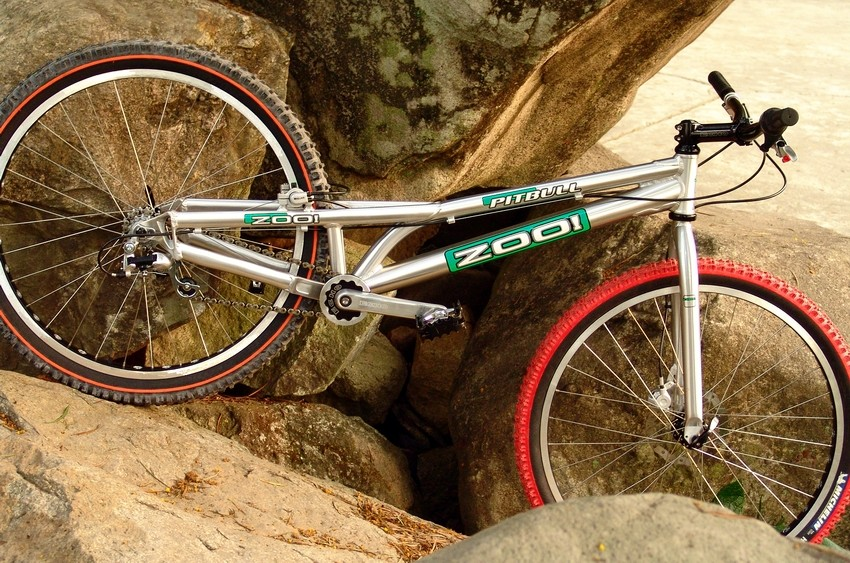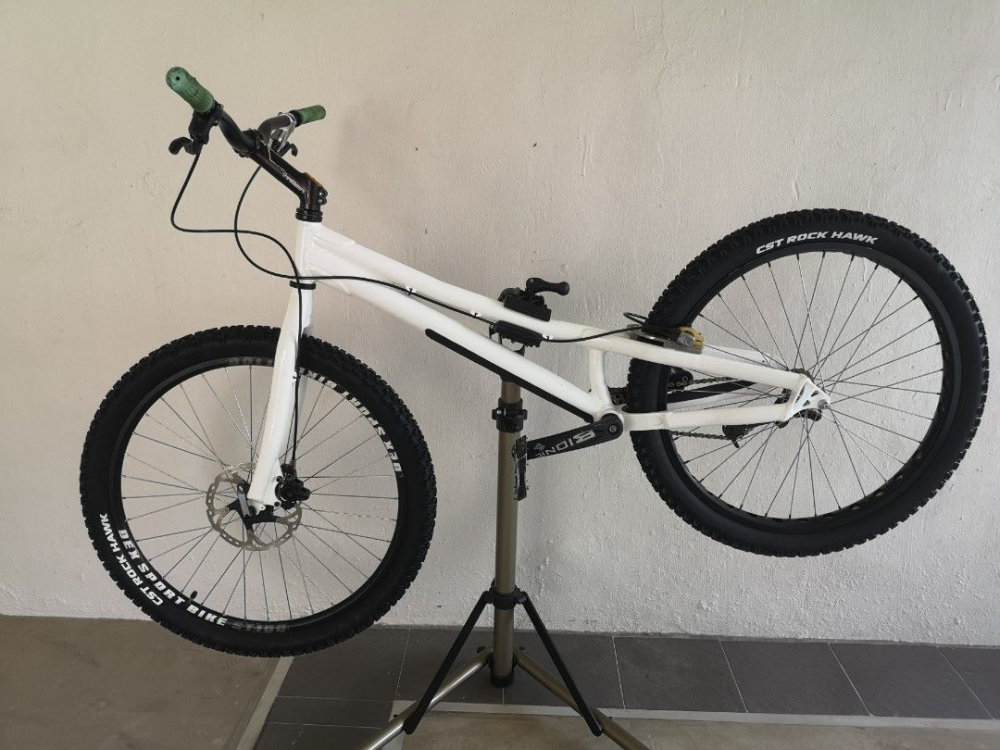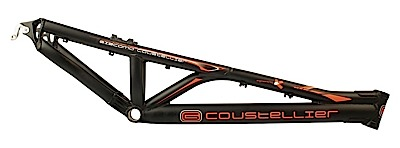-
Posts
603 -
Joined
-
Last visited
-
Days Won
58
Content Type
Profiles
Forums
Gallery
Everything posted by La Bourde
-
Hi Rich, Just wanted to tell you how I really appreciate all what you do for trials (videos, shows and now this). We need more of this kind of initiatives and hard work. Thx a lot!
-
Get well soon!
-
Hi, would like to share this really interesting discussion about event organisation and the future of trials. Thank you guys for the nice podcast !
-
The Echo lever are prone to leakages. Look at the side of the pistons of the caliper: if some deep scratches are present, the calipers are done (I guess it occurs when some sand or other abrasive stuff stick there) There is then so much friction that the pistons don't come back. I had Clean, Race line, Hashtagg lever but never used the trialtech one. Knowing the quality of their products and the feedback of Rich from RPM, I guess they are really good. If you don't want to spent that much, a good old magura lever from the 2005 serie, with the edges cut off (see Ali C videos again, thx to him and tartybikes) does the job really well.
-

Wild custom fillet brazed trials frame
La Bourde replied to 31511_1442861986's topic in Bike Pictures
The complete bike: https://www.instagram.com/dbohemian/p/ClhVXNtSoDz/ -
As Sam Song noticed, I think that James's bike weights more than the measured 9,3kg. His scale is surely off. 9,3kg is really light for a street trials. @Sam Song: what about titanium screws? It does not make a huge difference though.
-
I agree. You can ride with a lot of pressure too. The sidewalls are similar to the previous Schwable Table top, very thin. That's the only way to a get a tire that light.
-
I think the light bicycles rims combined to tubeless billy bonkers saved a lot of weight. The combo seat is also many hundred gramms lighter than a pivotal or tripod one, for only a few bucks.
-
Difficult to know Everyone warmly recommends the Coust brake pads but the ones I got with an used bike are OK, but I prefer the Crewkerz ones or the cheap Jitsie (but the last ones broke...) I also assume they somehow expire. Cleaning the rim may have a negative effect first. I read that, the rim requires a first thin layer of rubber to deliver the best result. According to my experience, that is the case (and in different applications the same applies)
-

Handlebar Rise: Does It Really Make a Difference?
La Bourde replied to Ordinary Juan's topic in Trials Chat
You need to distinguish two aspects : getting on the rear wheel and staying balance on the rear wheel. Basically, both can't be solved by the same geometry. Either you go for one or for the other, but you can't have both simultaneously. A high bar will make pulling the front wheel up much easier. Thus, you will have less problem to maintain the left/right balance during the first phase of a manual (I.e. getting to the balance point). For a really high bunny up, this can become a drawback, cause you have a really short period for jumping/for the extension. In addition, you start from a higher position, more on the back, but for really high bunny up, one shall slightly transfer his/her mass to the front, which is more difficult when starting too far back. One has less vertical amplitude too. On the rear wheel with a lower bar, your hips are closer to the balance point, they are more above the bottom bracket. That gives a much better control (moment of rotation is smaller, that makes it easier to control) -
Zoo pitbull I think Adam is right. It was also my first guess due to the "a" and the font but I did not find this version first. It is neither a mk I, nor a mk II...
-
I still did not find what is the teased frame 😁
-
To me, it looks like you jump higher/further than before. Nice to have videos of you riding trials back.
-
I am currently looking for some retro build inspiration and again these rear ends catch my attention: Phase: Toxsin: Saracen: Rockman Switch:
-
-
In fact the whole rear ends were pretty common: - yaabaa/ koxx code - planet x zebdi - BT raven 8 ...
-
Really nice 😯👍👍👍 Did you make your own headset lower cup or are there some 1" 1/4 to 1" 1/2 adapter on the market? To me, all trials bikes need a tensioner, else the tension will vary too much after some riding.
-
Once you are done with the first side in the clockwise direction, you flip the wheel and grind again in the clockwise direction.
-
You cannot really do something wrong, as long as you do not apply too much force or spend 10minutes on the same spot. So if your goal is too have a light grind, the worst that can happen is that it is too light. You can try on a old rim too. You can also try to grind some inches of the new rim and observe the result and learn from it. The goal is to achieve a sharp grind and the angle of the grinder is basically the only variable (you can estimate the speed by watching a tutorial and the force to apply is as light as possible) Ali C has a good tutorial (with adamR28 as guest).
-
You are right, there are problems with both hubs. Some riders even do not want to ride Hope anymore (e.g. Yohan Triboulat). But I never encountered a problem with my Hope IV SS (I had 3 different hubs). I saw quite a few used Hope Pro V recently to sell that came back from warranty. Charlie Rolls seems happy with his two hubs. Difficult to get a clear picture of the reliability. Some I9 had also issues. My current assumption is that the frame stiffness, how the wheel is laced and how powerful the rider is play a big role in the reliability
-
I do the same as craigjames described: I use an angle of 45°, sometimes a little more and a disc for metal cutting. Light but sharp. I had good results on Crewkerz/WaW and Clean rims. Somehow I prefer the Crewkerz pads to the Coust, but I do not ride much in wet condition (and I think the Coust I have are too old).
-
I prefer light to medium grind even if I have to repeat it more often. A fresh light grind seems better to me than an old medium one. It is more time consuming though, but having a reliable rear brake is very important.
-
Yes, thanks to Shin Dig to film the competition and all what they do. In their podcast today, they said they want to improve the coverage, to make it more professional (better filming, explaining rules better, more info on the screen, etc). I agree it will make things better, but I think this is not the real issue. To me, Canardweb is right: the current competition format is just boring. And as long as the format does not change, I guess the audience will not grow. I recall being in 2004 at the world championship in Les Gets with my parents and sister. They are not into sport at all. We saw 4x, downhill, a little of cross country and trials. My whole family enjoyed watching DH, 4x and XC. But trials ... they did not understand the rules (that were much easier back then), they saw only a part of each rider run, they did not understand the current ranking, etc. They stated something like "you get impressed the 5 first minutes and then you realize you can't understand the racing" Even when we watched on the TV some competition, they never enjoyed trials. But a downhill race, they appreciate. We watched several world cups together. So the current format is not appropriate for a broad audience. And with the new rules and the new obstacles, it is even for a passionate guy like me quite boring. Go up, go down, go up, go down... and always the same moves. A gate could be much more creative: e.g. force the pro to do the same move on the same obstacle from both sides, repeat the same move Also some obstacles just suck: The audience shall be able to relate to the obstacles. Back in the days, the zones used the environment, like a bridge, some stairs, a bench, etc. And that was really good because people can relate to that. When you have pile of logs, some concrete walls, how do you know how high it is really? Now if you a litter bin, a car, a fire hydrant, people know these things. Having natural elements makes it also less human build and people relate more to that (as they cross the river during their last hiking in the Alps or when they ride their enduro bike). The audience shall not think the course is specially built for the event: if it is the case, the audience thinks that the obstacles lay this way to make it easier to ride. Do not forget, the broad audience knows nothing about trials... I think the track walk is a great addition, but still, during the show, it is difficult to the see the gate, the tape and so on. So basically the audience is not really involved. Really, as a comparaison, just look at the last DH world cup in Loudenvielle https://tiz-cycling.io/video/mtb-dhi-world-cup-2024-6-loudenvielle-full-race/ It is much more breathtaking that trials ... And I don't want to start the comparaison between the videos in street/trials and the bmx ones ... PS: if someone from Shindig wants more feedback, -> PM. I will be glad to help!
-

Handlebar Rise: Does It Really Make a Difference?
La Bourde replied to Ordinary Juan's topic in Trials Chat
Exactly: when the bar is too high,it can become a drawback for high bunny hops. I guess this is because the amplitude of the chess downwards movement is reduced. In addition, all moves to the front are more difficult, static being a nightmare then... -
I think the issue is related to the sole being not stiff enough, as pointed out by marg26. I had sometimes some kinds of cramps at my arch when I rode a lot with skate shoes. I think the issue was worse with very concave pedals (DMR v6) too. Now I ride bike specific shoes (currently some Pearl Izumi X-alp flow) and since then I do not have the problem anymore. Vans and shoes with vulcanized soles (not sure it is the right word) are terrible, no lateral stiffness at all and no damping, I do not recommend them. I had some crashes involving quite a lot of force on the heel, so it is not a bad idea to have some cushion there.








